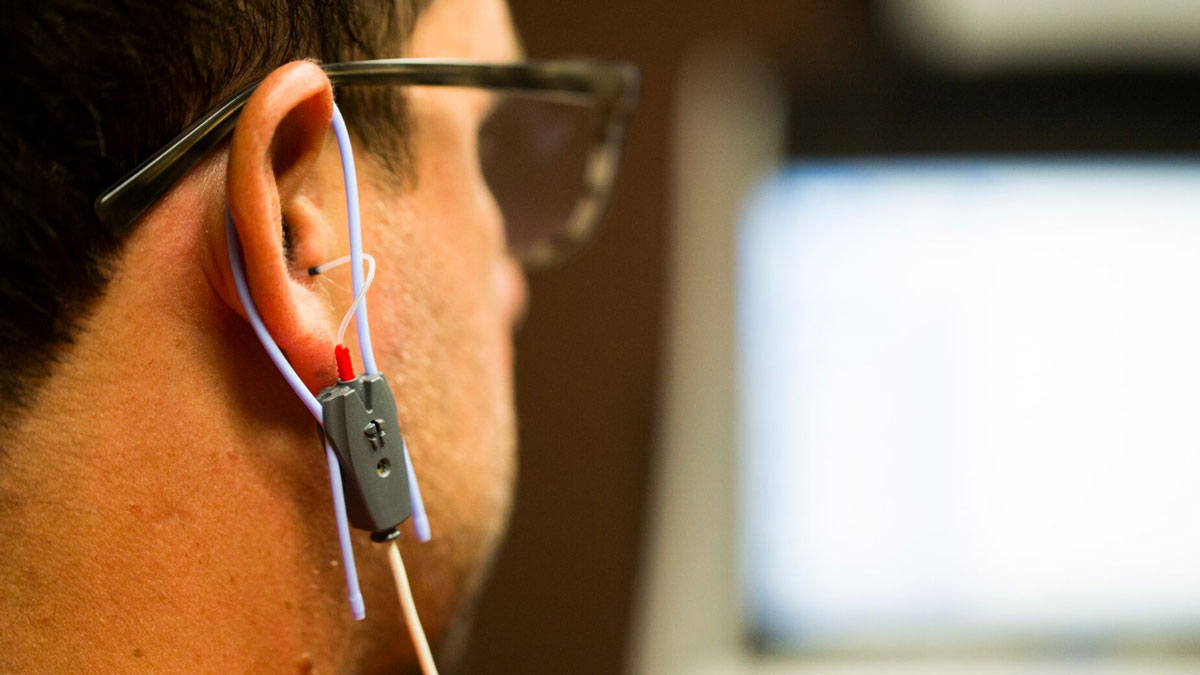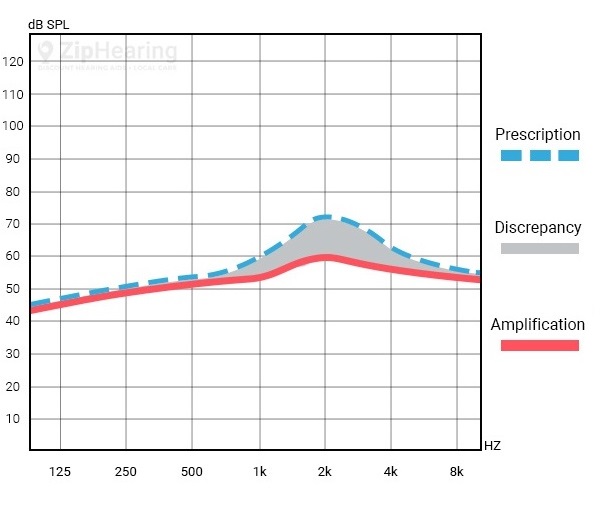Real Ear Measurements

Why do you need real ear measurements?
Hearing aids do not come out of the box ready for use. Hearing aids need to be programmed and verified for patients to hear their best. Even top-of-the-line hearing aids can be rendered useless if best practice standards are not used.
Getting the Right Prescription
Real ear measurements provides graphs of sounds levels recorded in the ear to ensure that the hearing aids are set properly for the prescription, and that’s why it’s been the gold standard in our industry for years.
A probe tube attached to a microphone is placed in the ear canal and the output of the hearing aid is measured in decibels for both speech and loud sounds to make sure the levels are meeting prescriptive targets. The tube is placed very near to the eardrum and needs to be inserted carefully by a trained hearing specialist.
Few clinics perform real ear measurements despite evidence that shows patients are more satisfied with their hearing aids when real ear measurement is performed.
Ericka DeVore, Au.D
Why are only 30-40% of audiologists doing them?
Training & Expertise
Measuring and interpreting these acoustic gain curves requires a good knowledge of acoustics. Only audiologists have 4 years of graduate work and courses in acoustics.
Lack of Time
Busy corporate run practices know that time is money and the goal is to see as many patients as quickly as possible. Adding additional time to do tests that are unpaid is not logical to them.
No Legal Requirement
There is no requirement that hearing aids be tested to make sure they are fit properly for a particular hearing loss. They are only tested for meeting factory specifications.
Cost
The cost of the equipment is several thousand dollars and insurance does not allow audiologists to bill for those tests.
Sample Real Ear Measurement Result

The blue dotted line represents how the hearing aids should be amplifying, based on your unique hearing loss and prescription.
The red solid line represents how the hearing aid are actually amplifying, as measured by the microphone.
The grey area illustrates the discrepancy between how the hearing aid should be amplifying, and how it actually is.
What this chart shows: The results show that the hearing aids are under amplifying at around 2kHz.
As a result of this under amplification, the hearing provider can now fix this, by increasing the gain that the hearing aids provide at 2kHz.
After making that fix, the provider will then run real ear measures again, this time hoping for the solid and hashed lines to be on top of each other.
If the lines are on top of each other, that indicates that the hearing aids are providing exactly the right amount of amplification at each frequency.
This is the purpose of real ear measurement- to objectively verify that the hearing aids are doing what they should be.
Are Real Ear Measurements Necessary?
Imagine a scenario where a hearing aid was under-amplifying, providing insufficient sound amplification for the wearer. If this error had gone unnoticed by real-ear measurement (REM) and remained uncorrected by the hearing care provider, the hearing aid wearer might have been content with the sound quality. However, after the issue was identified and rectified, leading to increased gain, the wearer would achieve better speech understanding and clarity.
How much does Real Ear Measurement cost?
In most cases, the fee for real ear measurement will be bundled into the purchase price of your hearing aids, if you are purchasing new hearing aids.
The fee for performing real ear measurements on existing hearing aids will usually range from free to as much as $250 per hearing aid.

